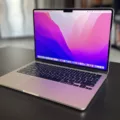Phone buffering can be a frustrating experience, especially when you’re trying to stream videos or browse the internet. But have you ever wondered why your phone buffers? There are several reasons why this might happen, and understanding them can help you find ways to improve your phone’s performance.
One common reason for phone buffering is a lack of available memory or storage space. When your phone’s memory is full, it can slow down its performance and cause buffering issues. To free up space, you can delete unnecessary apps, photos, and videos, or transfer them to a cloud storage service.
Another factor that can contribute to phone buffering is a slow internet connection. If you’re using a cellular network, check if you have a strong signal or try connecting to a Wi-Fi network for faster speeds. Additionally, you can try pausing the stream for a few moments to allow the video to buffer before resuming playback.
Streaming videos in high quality can also put a strain on your phone’s resources and cause buffering. Consider reducing the video quality to a lower resolution or switching to a lower bitrate to improve streaming performance. This can be especially helpful if you’re experiencing buffering while watching videos on platforms like YouTube or Netflix.
Furthermore, having too many devices connected to your network can slow down your internet speed and lead to buffering issues. If you have multiple devices connected, try disconnecting some of them or prioritize your phone’s internet connection to ensure a smoother streaming experience.
Updating your phone’s software and apps can also help improve its performance and reduce buffering. Developers often release updates that fix bugs and enhance performance, so regularly check for updates and install them when available.
Lastly, clearing out your phone’s cache can help optimize its performance and reduce buffering. Internet browsers, as well as individual apps, store cache data to make your experience faster and more enjoyable. However, if the cache becomes too full, it can slow down your phone and cause buffering. You can clear your phone’s cache by going to the settings menu and selecting the option to clear cache for specific apps or for the entire device.
Phone buffering can be caused by various factors such as lack of memory, slow internet connection, high-quality video streaming, too many connected devices, outdated software, and excessive cache data. By addressing these issues, you can improve your phone’s performance and enjoy a smoother streaming experience.
How Do You Stop Your Phone From Buffering?
To prevent your phone from buffering, you can follow these steps:
1. Clear Browser Cache:
– Open your internet browser (e.g., Safari, Google Chrome, Firefox).
– Tap on the menu button (usually represented by three dots or lines) located in the top-right corner.
– Select “Settings” or “Preferences.”
– Look for the option called “Privacy” or “Privacy & Security.”
– Locate and tap on “Clear Cache” or “Clear Browsing Data.”
– Choose the time range (e.g., last hour, last day, all time) for which you want to clear the cache.
– Select “Clear” or “Delete” to remove the cache data.
2. Disable Automatic App Updates:
– Go to the Google Play Store (Android) or App Store (iOS).
– Tap on the menu button (usually represented by three lines or your profile picture).
– Look for “Settings” or “Preferences.”
– Find the option called “Auto-update apps” or similar.
– Select “Do not auto-update apps” or “Never.”
3. Limit Background Data Usage:
– Open your phone’s “Settings” app.
– Look for “Data Usage” or “Network & Internet” settings.
– Tap on “Data Usage” or similar.
– Scroll through the list of apps and identify those that consume a significant amount of data.
– Tap on each app and toggle off the option to “Allow background data usage” or similar.
4. Close Unnecessary Apps:
– Press the square or recent apps button on your phone (usually located at the bottom of the screen).
– Swipe left or right to navigate through the list of open apps.
– Swipe up or sideways to close the apps that are not in use.
– This helps free up memory and processing power, reducing the chances of buffering.
5. Restart Your Phone:
– Press and hold the power button on your phone until the power menu appears.
– Tap on “Restart” or “Reboot.”
– Allow your phone to restart fully before using it again.
– Restarting your phone can help clear temporary files and refresh system processes, potentially reducing buffering issues.
6. Check Your Network Connection:
– Ensure that you have a stable and reliable internet connection.
– Connect to a Wi-Fi network if available, as it generally offers faster speeds than mobile data.
– Move closer to your Wi-Fi router or consider using a Wi-Fi signal booster to improve signal strength.
– If using mobile data, check if you have a strong signal and consider switching to a different network if needed.
By following these steps, you can optimize your phone’s performance and reduce buffering while using the internet or streaming content.

How Do I Fix Buffering?
To fix buffering issues, you can try the following steps:
– Close other applications and programs running on your device. This will free up system resources and ensure that your device is not overloaded, leading to buffering.
– Pause the stream for a few moments to allow the buffer to build up. This will give the video enough time to load ahead, reducing the chances of buffering during playback.
– Reduce the video quality. Lowering the resolution or switching to a lower quality option can help alleviate buffering issues, especially if you have a slow internet connection.
– Speed up your internet connection by checking if there are any downloads or uploads happening in the background. You can also try resetting your router or contacting your ISP to ensure you are getting the optimal speed.
– Remove other devices connected to your network that might be consuming a significant amount of bandwidth. This includes devices like smartphones, tablets, or gaming consoles that might be streaming or downloading content simultaneously.
– Update your graphics card drivers to ensure optimal performance during video playback. Outdated drivers can sometimes cause buffering issues.
– If possible, try using a wired Ethernet connection instead of Wi-Fi. Wired connections tend to be more stable and provide a faster and more reliable internet connection.
– Clean up your browser settings by clearing cache, cookies, and browsing history. This can help improve the overall performance of your browser and reduce buffering issues.
By following these steps, you should be able to troubleshoot and fix buffering problems while streaming videos.
Conclusion
Phones have become an essential part of our daily lives. They offer us a wide range of features and functionalities that make our lives easier and more convenient. From communication to entertainment, phones have revolutionized the way we interact with the world around us.
Phones have also become a powerful tool for businesses and professionals. With the ability to access emails, documents, and other important information on the go, phones have increased productivity and efficiency in the workplace. They have also opened up new opportunities for remote work and collaboration.
However, it is important to remember that phones should be used responsibly. Excessive use of phones can lead to addiction and negative impacts on our mental and physical health. It is important to find a balance and set boundaries when it comes to phone usage.
Phones have greatly impacted our lives in a positive way. They have transformed the way we communicate, work, and entertain ourselves. As technology continues to advance, phones will only become more powerful and integrated into our daily lives.





